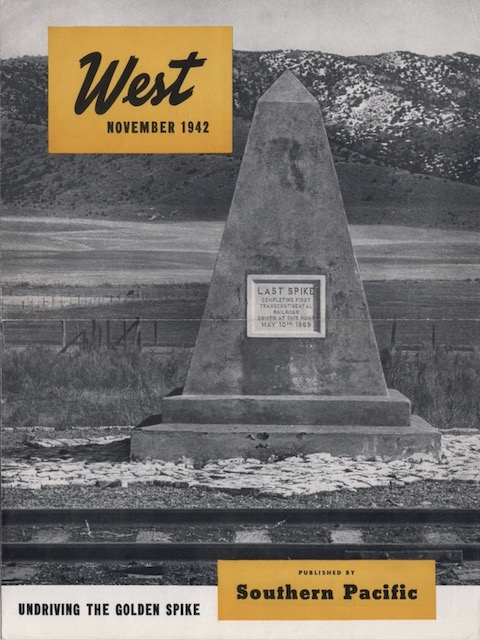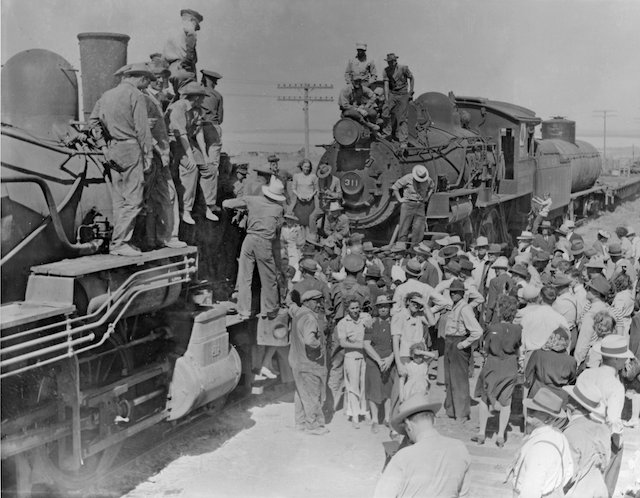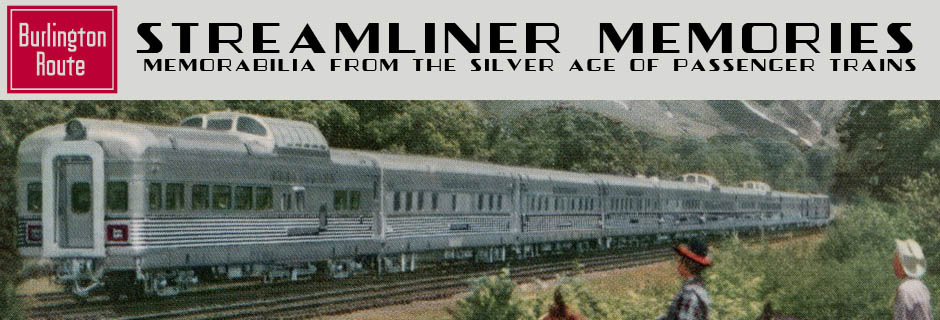Dated November 1, 1942, this issue of West doesn’t promote any vacation destinations or announce new trains, which would have been inappropriate in the midst of the world war. Instead, it relates how Union Pacific and Southern Pacific ceremoniously “undrove” the last spike that had connect the UP and Central Pacific in 1869.
 Click image to download a 7.6-MB PDF of this brochure.
Click image to download a 7.6-MB PDF of this brochure.
Although the last spike was driven in a desolate place called Promontory, Utah, the two railroads later agreed to divide their lines about 25 miles east of there at a town called Corinne. In 1905, Promontory was bypassed by the Lucin Cutoff, which went across the Great Salt Lake instead of around it. The rails to Promontory were still used for local traffic, but according to West the government decided to tear it up for scrap as a part of the war effort.
As a tribute to those who built the line, not to mention a publicity stunt, UP and SP officials agreed to have a ceremony pulling out a gilded replica of the golden spike at the approximate location of the last spike. They brought a couple of steam locomotives and took photographs of a large crowd similar to ones taken in 1869. The photographs are looking south, so the locomotive on the left is Union Pacific while the one on the right is Southern Pacific. An entire book has been written about this ceremony, but I don’t have a copy.

This Utah State Historical Society photo shows the steam locomotives used to “undrive” the last spike in 1942. The SP locomotive, number 311, is on the right. Click image for a larger view.
The photo in West shows very little of each locomotive, and the Utah State Historical Society photo above is only a little better. It appears that Union Pacific’s locomotive is numbered 3100, which was a 4-6-2 Pacific that was built in 1906 and kept on the roster until 1947. The locomotive on the right is numbered 311. The only SP locomotive I can find with that number was a Texas & New Orleans 4-6-0. Both of these locomotives were aging in 1942, but it makes sense that the railroads wouldn’t use a modern locomotive at the ceremony since such locomotives would have been hard at work delivering war materials.
This may have been the very last issue of West. I’ve never seen an issue dated 1943, but it is possible that one more issue was published in December 1942. If, however, all of the issues came out between March 1940 and November 1942, and if they were monthly, that would make 32 total issues. So far, I’ve identified 24. However, they may have published less than monthly, which would help explain why SP was inconsistent about putting dates on the covers.

The information I have seen is that the two locomotives belonged to Hyman-Michaels, the company scrapping the line. The two locomotives were ex-M&StL 2-8-0s 311 and 319.
That makes sense. Thanks for letting us know.